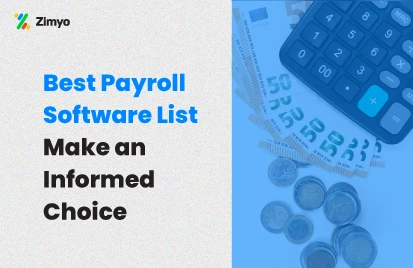India is one of the fastest-growing economies and a huge credit for this booming economy goes to us taxpayers. Every Indian as a responsible citizen is liable to pay taxes and contribute in taking the country forward. The Indian Tax system is a complex one and involves some research for better understanding. However, in this article, I will be discussing all TDS and TDS Challan, for salaried employees. Now let’s get straight into a detailed discussion of TDS Challan:
What is TDS?
TDS is an acronym for Tax Deducted at Source which for salaried employees basically means deduction of Income Tax by the employer at the time of payment, which the Central Board for Direct Taxes (CBDT) oversees. Even though many income sources are eligible for TDS, here we will be discussing only TDS deduction subject to the salary of an employee.
How is TDS calculated on salary?
TDS for all salaried employees are deducted in accordance with the ongoing Income Tax Slab rate which varies according to the annual income of the employee.
Is TDS mandatory for all salaried employees?
For employees earning up to Rs 2,50,000 annually, the employer cannot deduct any TDS, however, for employees above this income slab, the employer is liable to deduct TDS depending upon the income slab.
What is Form16?
Form 16 is a certificate issued by the deductor(in this case employer) to the employee, offering information regarding the annual Tax Deduction at Source. If an employer fails to issue Form16, they can be penalized by the law.
What is TDS return filing?
Taxpayers are required to abide by the policies set by the Income Tax Department and in doing so, they are asked to pay income tax and fill forms, which is referred to as return filing.
What is a TDS Challan?
A TDS Challan is required to be filled in by the deductor at the time of filing TDS return.
What is Challan 281?
Companies use Challan ITNS 281 for paying off TDS/TCS. It can be downloaded via the Income Tax Department’s website.
What is the rate of TDS deduction on salary?
Not all employees are subject to TDS deduction as people earning less than Rs. 2,50,000 yearly are exempted. However, for employees(men and women) below the age of 60 years are subject to TDS deduction and the rate of deduction goes as follows:
- For Income less than or equal to Rs. 250,000, there is no tax;
- For Income more than Rs. 250,000 and less than Rs. 500,000, Tax Rate is 5%
- For Income more than Rs. 500,000 and less than Rs. 10,00,000, Tax Rate is 20%
- For Income above Rs. 10,00,000, Tax Rate is 30%
What is Form 26AS?
Form 26AS is used to cross-check if the tax deductions including TDS is being regularly deposited by your employer or not. To do so, you’ll have to follow the below steps:
- Login to e-Filing website using the User ID, Password, Date of Birth /Date of Incorporation and Captcha.
- Go to “My Account” and click on “View Form 26AS (Tax Credit)”.
What is TRACES?
TRACES is an acronym for TDS Reconciliation and Correction Enabling System. It is aimed towards assisting taxpayers in checking and downloading Form 26AS. However, you’ll need to first register.
Conclusion:
It is the core responsibility of every employee and employer to pay taxes as these taxes help a country develop. In an attempt to make sure that taxpayers are abiding by the policies set by the Government under the Indian Income Tax Act of 1961, TDS was introduced which deducts income tax at the source.
However, many employees in our country aren’t aware of how and why these deductions are managed. But it is the fundamental right (The Right to Be Informed) of every employee to know all tax laws and how his hard-earned money is contributing to the nation’s growth.
Also Read: New Labour Codes: Understanding the New-Wage Code Bill & its impact on businesses




